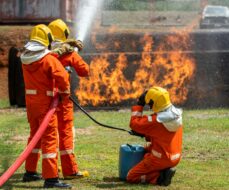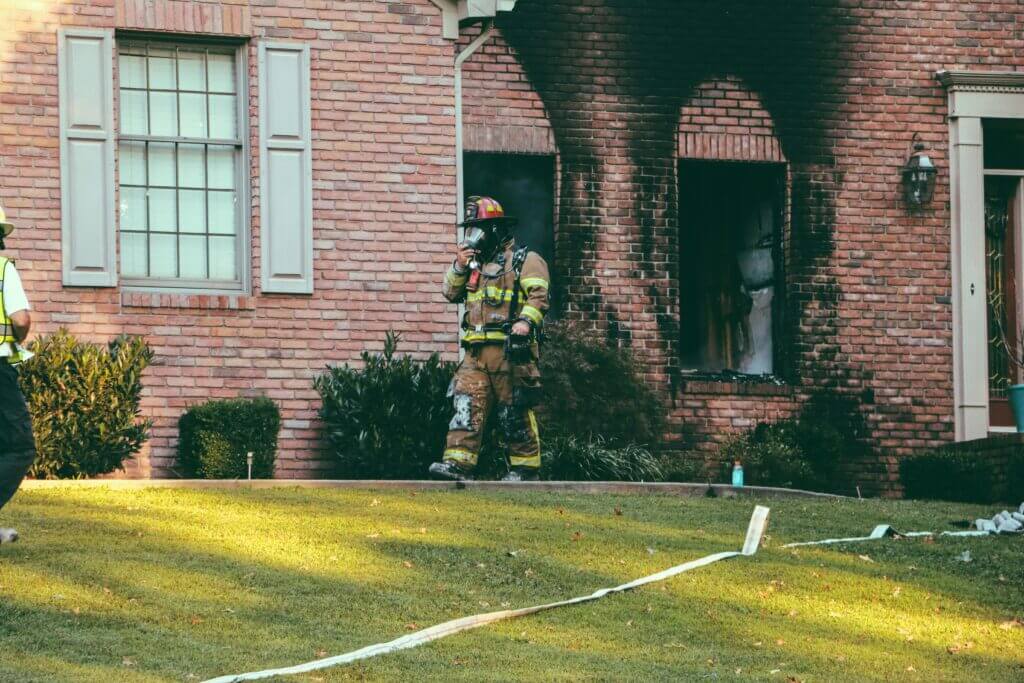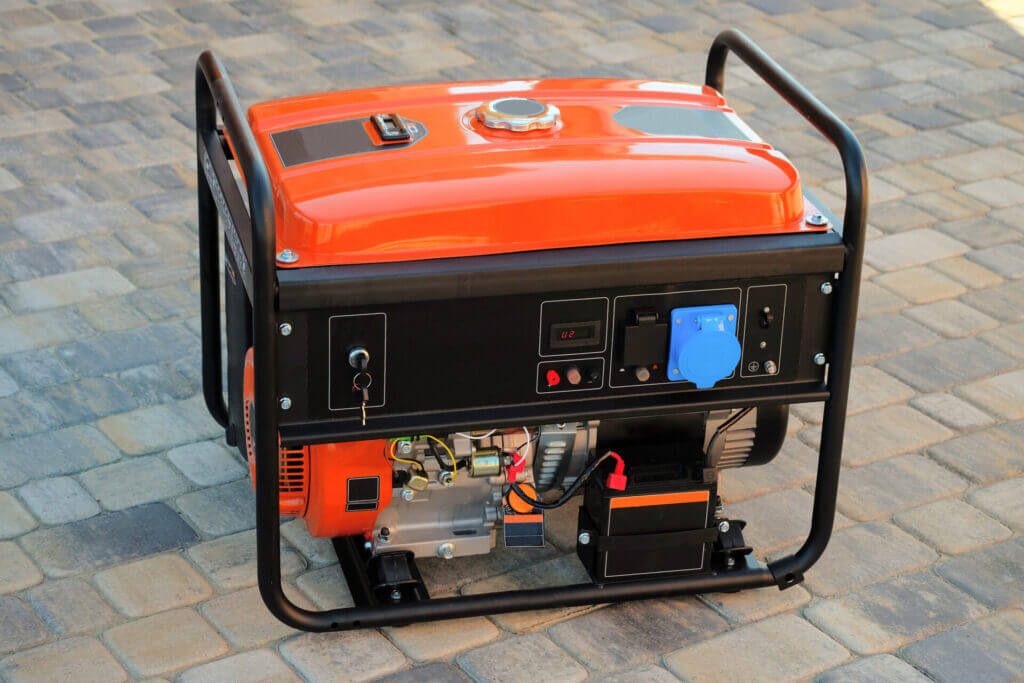Are you doing a restoration project?
Modernize can pair you with three to four pros in your area, so you can compare options and save time and money.
Understanding Fire Damage and Its Impact on Structural Integrity
Fires can weaken framing, roof systems, and the connections that hold everything together. Additionally, you can’t always see the damage. High heat can char wood, warp steel, make concrete crack and flake, and weaken nails, screws, and metal connectors. Water and foam from firefighting can soak materials and lead to mold if they aren’t dried quickly. Let’s discuss how to mitigate and repair the damage.

Signs Your Building’s Structure Is Compromised After a Fire
Look for these red flags:
- Framing: Burned or brittle studs and joists, cracked or separating engineered lumber, sagging floors, and walls that lean.
- Roof: Bent trusses or rafters, softened roof panels, light showing through the deck, and damaged fire blocking.
- Masonry and Concrete: Foundations that crack or flake, shifted bricks or blocks, and loose chimney facing.
- Metals: Warped beams, melted hangers and fasteners, and misshapen ductwork.
- Moisture and Smoke: Lingering smoke odor, soot stains, wet insulation, and mold growth within 24 to 72 hours.
Common Types of Structural Damage Caused by Fires
- Heat Damage: Burned wood, weakened steel, and concrete that cracks and flakes.
- Water Damage: Soaked drywall and insulation, swollen subfloors, damaged electrical parts, and higher risk of mold.
- Smoke and Soot: Acidic residue that can corrode metal, stain finishes, and harm wiring and HVAC components.
- Code Impacts: Repairs can trigger required upgrades — egress, smoke alarms, fire blocking, and electrical or structural fixes.
Can a House Be Repaired After a Fire?
Yes. In many cases, fire damage restoration can help fix your issues. Heavily damaged areas may be rebuilt. Lightly affected areas can be cleaned, deodorized, dried, and sealed. Your contractor will coordinate engineering reviews when needed, obtain permits, and schedule city inspections to verify compliance and safety.
Professional Cleaning After a Fire
Certified crews isolate work zones, remove debris, and run negative-air filtration. They dry the structure, clean soot with the right methods (HEPA vacuum, dry sponge, alkaline wash), and treat smoke odors with thermal fogging or hydroxyl or ozone under controlled conditions. As you rebuild, consider fire-resistant materials like fire-rated drywall, treated lumber, noncombustible siding, metal framing, Class A roofing, and fire-resistant insulation. These upgrades can slow flame spread and improve future resilience.
DIY vs. Professional Fire Damage Repair
Fire repair is not a typical DIY project. Hidden structural issues, contaminated ash, compromised wiring, and mold require specialized training and equipment. Professionals protect indoor air, meet code, and document work for insurance. This can save time and preventing costly rework.
Cost to Repair a Fire-Damaged House
Costs vary with fire size, affected rooms, materials, and code upgrades. Many projects fall between $3,000 and $40,000; severe losses can exceed $100,000.
Fire Damage Repair Cost Breakdown
| Service | Typical Cost Range |
|---|---|
| Debris Removal and Cleanup | $1,000 to $5,000 |
| Structural Repairs | $5,000 to $30,000 |
| Smoke Odor Removal | $200 to $1,200 |
| Water Damage Mitigation | $400 to $13,000 |
| Full Reconstruction | $10,000 to $75,000+ |
Actual costs depend on square footage, material choices, access, and local labor rates. Insurance coverage, deductibles, and code-upgrade endorsements also affect out-of-pocket totals.
Find the Right Contractor for Your restoration Project
Whether you’re ready to begin your project now or need some expert advice, our network of contractors are here to help. With a few simple questions, we’ll find the best local professionals for you
Steps to Take to Repair Structural Fire Damage
Once the fire department clears the site for entry, put safety first and document everything for insurance.
1) Assessment
A licensed contractor evaluates the structure — foundation, load-bearing walls, roof framing, and floor systems — and checks electrical, plumbing, and HVAC. Moisture mapping identifies wet materials; engineers may be brought in for heavy damage. The result is a written scope, estimate, and timeline.
2) Demolition and Cleanup
Crews remove unsalvageable materials, isolate work areas, and handle hazardous debris, soot, and saturated insulation. Water mitigation begins immediately to prevent mold.
3) Reconstruction
Contractors repair or replace structural elements, install new sheathing and drywall, restore systems (electrical, plumbing, and HVAC), and upgrade to current codes. Where feasible, they incorporate fire-resistant assemblies and materials.
4) Inspection
Final inspections confirm code compliance and structural integrity. Keep records of any permits, inspection results, material specs, and photos for insurance and future resale.

Conclusion: Restoring Your Home After a Fire
Fire recovery is a process, but it is achievable. With a thorough assessment, professional cleanup, and careful reconstruction, your home can be safe, healthy, and structurally sound — often stronger and more resilient than before.
Find the Right Contractor for Your restoration Project
Whether you’re ready to begin your project now or need some expert advice, our network of contractors are here to help. With a few simple questions, we’ll find the best local professionals for you
Reviews from Real Homeowners
Welcome to Homeowner Resources! We are the Modernize blog. Modernize pairs more than 3 million homeowners a year with pre-vetted contractors in their area. This blog started because we believe homeowners should know everything about their homes, from how their HVAC works to which front door colors they might love. On Homeowner Resources, you can find information on every part of your home, right down to how you can negotiate with contractors to get the best price. Here's more about the blog.
Need a contractor? Learn more about how Modernize finds the right pro for you.



